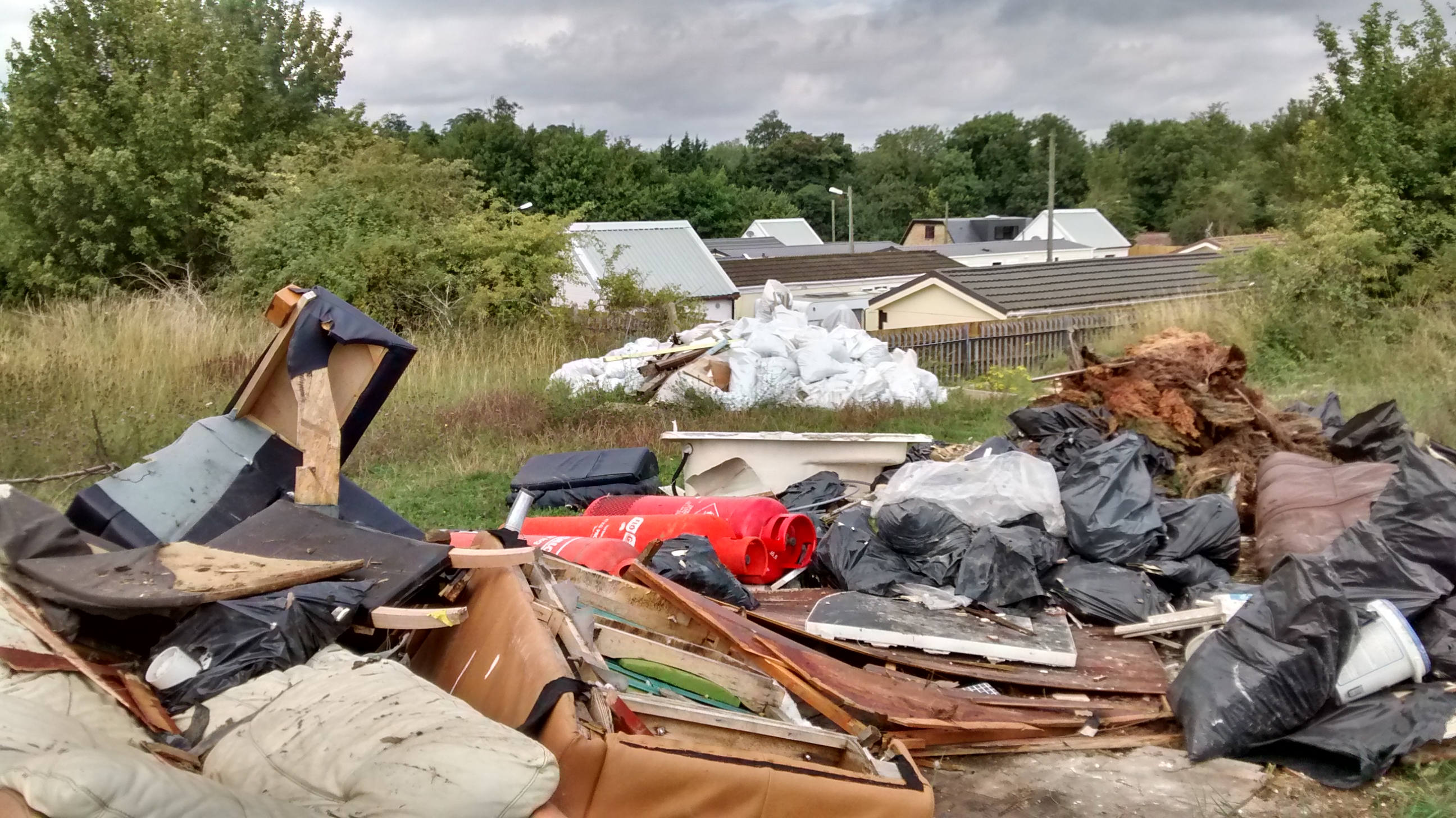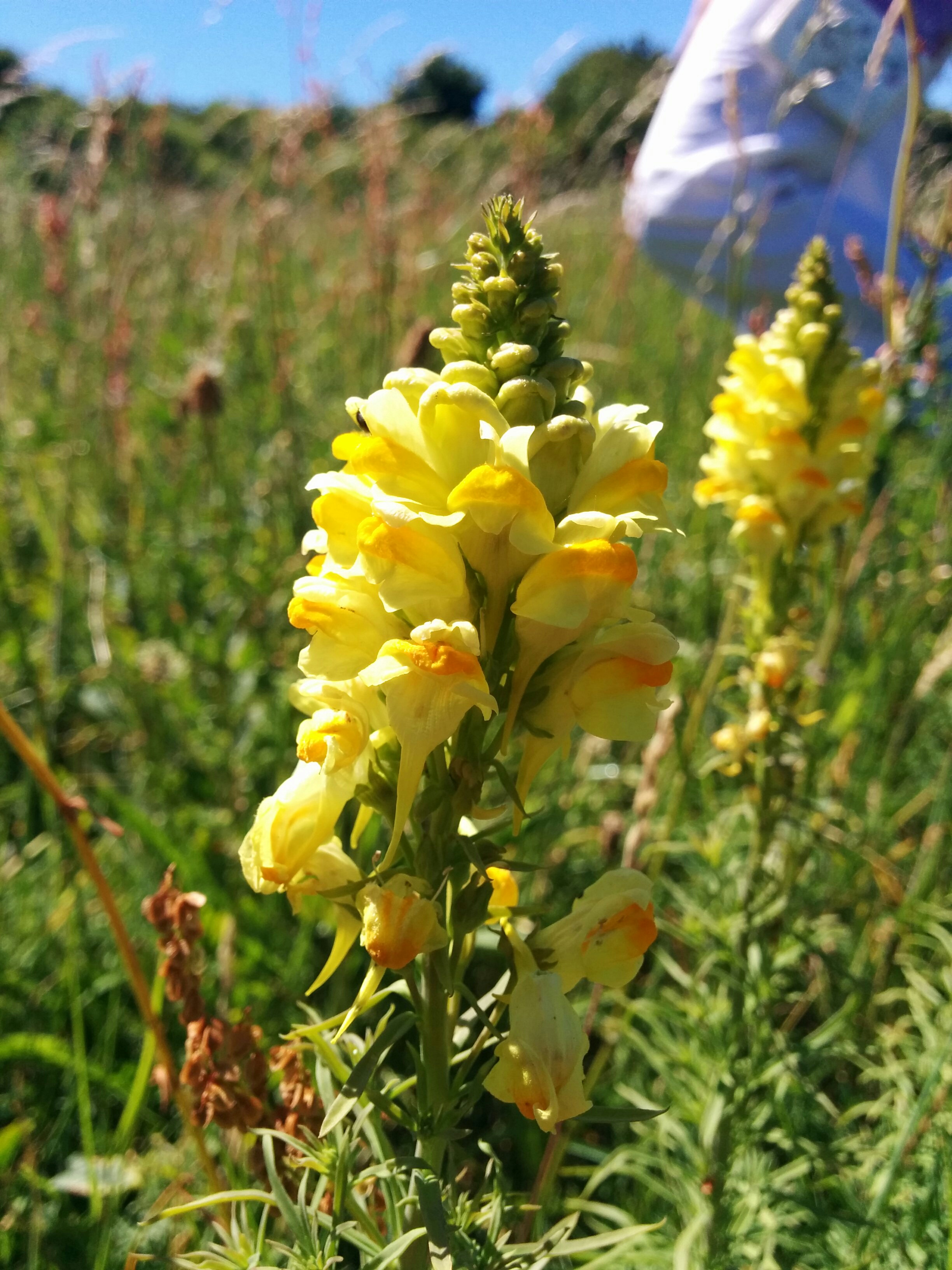A couple of blogs back I was reporting on the rare observation of the brown hairstreak Thecla betula and chalk hill blue Polyommatus corido at our sites. Joyous. Unfortunately, this week I report on a sighting that is far too frequent an occurrence in Britain, and that’s fly tipping. Before I go on I must say that when I told my friend about this, she genuinely thought that I was involved in a Fly conservation programme that involved reintroducing Flies back into the wild. I found something quite amusing about that.
Moving on, during a visit to Carshalton Road Pastures (CRP) in June, everything seemed normal in a thriving British grassland. Blue skies, a gentle breeze, butterflies frolicking, flowers blooming (toadflax Linaria vulgaris being my favourite) and Dave (Sutton’s Biodiversity Officer) surveying shirtless. A somewhat idyllic scene (Dave included) typical of the settings of a Hardy novel (Dave not included). However, this image was abruptly soured by rubbish that had been illegally disposed of on our site. Sofas, toilets, tiles, glass and much more, lay strewn across an area of the grassland, where the unscrupulous act of others had left their polluted mark on a site with conservation significance.
On Thursday, the SNCV returned back to CRP, where, to my dismay the waste had multiplied. Fly tipping has damaging effects on nature conservation. How can you create a species rich meadow where a desired space is suffocated by bath tubs and bricks? Will Skylarks nest amongst smashed glass and tiles? Can pollinators acquire nectar from bags of rubble? The mass of dead bees hidden within the rubbish bags suggests not.
So, it was up to the SNCV volunteers to remove the mess in order to make sure our previous efforts on the site did not go to waste and that the site could continued to be enjoyed by nature and the public alike. Soon, CRP will be mowed with the aim to encourage a greater abundance of plant life, which is essential for a healthy ecosystem, so removal of the rubbish is critical. Thus, armed with a pickup truck, a trailer and gloves we set about cleaning up the fly tipping, a particularly laborious task. With our limited resources at the SNCV, it seems such a waste that we have to spend a day and I expect more, clearing up fly tipping.
Later in the day, and with our final trip to the landfill site, we had cleared over 4 tonnes worth of rubbish. Being at the landfill site is certainly an eye opener and thought provoking. The site is huge, and as Mark and I waited in the car park, we must have seen more than 20 dust-carts within the space of 5 minutes enter so that they could be rid of their collected waste. Surely, we are consuming far too much as a society? What will happen when this landfill and others are too full? What area of countryside or ocean or space will be used next? What will happen when we use up our finite resources poured into what will eventually become waste? There is currently development at Beddington Lane for an incinerator to convert household waste in to energy (electricity). An improvement possibly, but what incentive is there for us to consume less if the options to deposit our waste is easier? Surely the answer is to change our attitude towards consumption and steer away from the aspirational lifestyle and growth economy. Reusing plastic bags, selecting fruit and veg without packaging, reducing food waste or composting are certainly steps in the right direction. If there is less consumption, there should be less waste and potentially less fly tipping.
It is important that nature can be enjoyed by all, so if you happen to witness a fly tipping incident please report it to https://www.sutton.gov.uk/info/200447/report_it. On a more positive note, it was great to see all the volunteers on Thursday helping out in such good spirits. Though not the most enjoyable task, our work at CRP certainly has a valuable contribution to conservation in Sutton and demonstrates the breadth of tasks that we undertake for wildlife and people at the SNCV.











